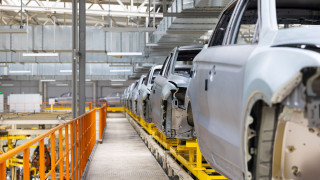
Car safety features have come a long way over the years, with airbags being one of the most significant advancements. These inflatable cushions are designed to protect occupants during a collision, reducing the risk of severe injuries. However, there is a common misconception that airbags always deploy in every crash. In this article, we will debunk this myth and explore the factors that determine when airbags deploy.
Understanding Airbag Deployment
Contrary to popular belief, airbags are not meant to deploy in every accident. The deployment of airbags is a complex process influenced by various factors, such as the severity and angle of the impact, the speed of the vehicles involved, and the location of the impact. Modern cars are equipped with sophisticated sensors that analyze these factors to determine whether deploying airbags is necessary.

Factors Influencing Airbag Deployment
1. Collision Severity: Airbags are designed to deploy in moderate to severe crashes. Minor fender benders or low-speed collisions might not generate enough force to trigger airbag deployment.
2. Angle of Impact: Airbags are typically programmed to deploy in frontal or near-frontal collisions. Side or rear impacts may not always cause airbags to deploy, as these scenarios may require specific side-impact airbags.
3. Speed of the Vehicles: High-speed collisions create more force upon impact, increasing the likelihood of airbag deployment. However, the specific speed threshold varies among different car models.
4. Location of Impact: Modern cars are equipped with sensors placed strategically throughout the vehicle. These sensors detect the location of the impact and help determine which airbags need to deploy. For instance, front airbags deploy in frontal collisions, while side airbags deploy in side-impact crashes.
5. Seatbelt Usage: Airbags work in conjunction with seatbelts to maximize safety. If the system detects that the occupant is not wearing a seatbelt, it may adjust the deployment strategy to provide enhanced protection.

Myths About Airbag Deployment
1. Myth: Airbags Deploy in Every Accident.
Reality: Airbags are designed to deploy in specific, high-impact situations to provide optimal protection. They do not deploy in every accident, especially in minor collisions.
2. Myth: Airbags Are Dangerous and Can Cause Injuries.
Reality: While airbags deploy with force, they are designed to cushion the impact and reduce injuries. However, improper seating positions or sitting too close to the airbag can increase the risk of injury.
3. Myth: Airbags Need Regular Replacement.
Reality: Airbags are designed to last for the life of the vehicle. Unless there is a specific issue identified by a professional mechanic, regular replacement is not necessary.
Optimizing Fuel Efficiency:
Premium cars often require high-octane fuel for optimal performance. While it might be tempting to cut costs, using the recommended fuel grade ensures your engine operates efficiently. Additionally, keep your car’s weight in check by removing unnecessary items from the trunk, improving fuel efficiency in the long run.
Conclusion
Understanding how airbags work and the factors that influence their deployment is crucial for car safety awareness. Contrary to popular belief, airbags do not deploy in every accident. Vehicle occupants should always wear seatbelts and follow proper safety guidelines to maximize the effectiveness of airbag systems. Car manufacturers continue to innovate, ensuring that airbags deploy in the right circumstances, providing the necessary protection to occupants during accidents.

















Your comment will be verified by admin before going live